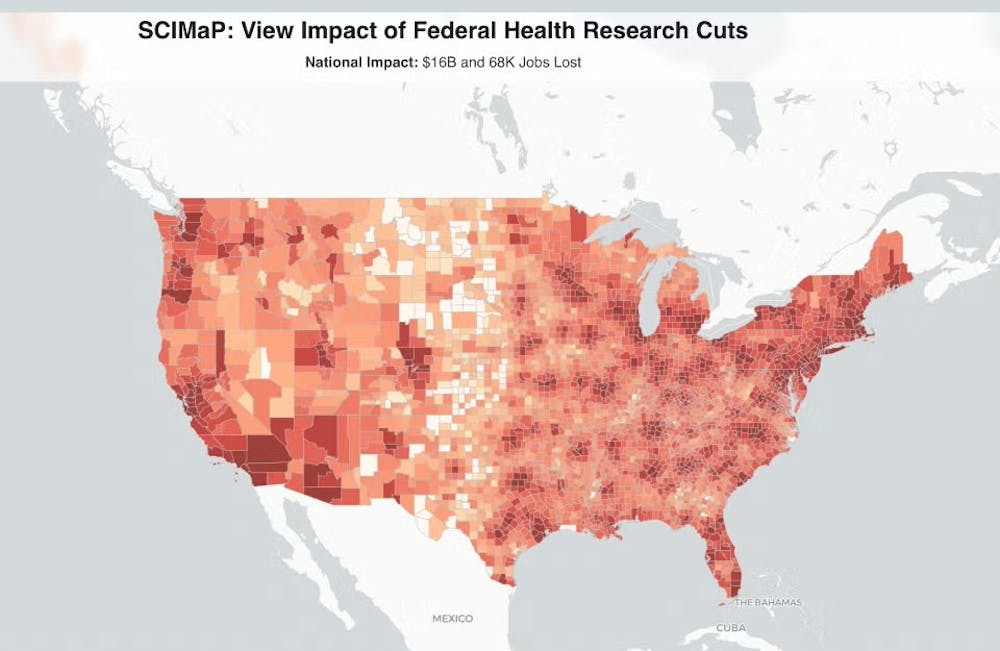
Penn’s Annenberg School for Communication’s researchers co-developed a new interactive map that shows proposed NIH funding cuts may lead to an estimated $16 billion in economic loss and 68,000 jobs lost.
Credit: Andrea BarajasA new interactive map co-developed by researchers at Penn’s Annenberg School for Communication shows that proposed NIH funding cuts may lead to an estimated $16 billion in economic loss and 68,000 jobs lost nationwide.
In February, the National Institutes of Health proposed a funding cut — a 15% cap on indirect costs — that could cost Penn $240 million. While a judge temporarily halted the changes following Penn and 12 other universities bringing a lawsuit against the NIH, a team of academic researchers from Penn, the University of Maryland, the University of Utah, Georgia Institute of Technology, and the University of Oregon led the effort in creating the data-driven map to communicate the impact NIH cuts would have at national, state and local levels.
“Universities, hospitals, research institutes, and businesses that receive NIH grants would lose money that is crucial for research,” the site read. “Medical research would be slowed, making it harder to cure diseases and keep people healthy. The U.S. could lose its standing as a world leader in medical research, science, and technology.”
Data was collected from a public database of NIH grants that were active in 2024 and estimated the economic impact of NIH funding reductions from a report published by the United for Medical Research Coalition.
Joan Bossert Postdoctoral Research Fellow at Annenberg’s Penn Center for Science, Sustainability, and the Media Alyssa Sinclair, professor and Scientific Director of Annenberg’s Communication Neuroscience Lab Danielle Cosme, and Annenberg Vice Dean Emily Falk are all members of the Penn team that co-developed the project. Sinclair co-led the effort with University of Maryland Biology professor Joshua Weitz.

The Science & Community Impacts Mapping Project (SCIMaP) developed an interactive, data-driven map to communicate the impact of federal funding cuts (Photo courtesy of Annenberg School for Communication).
The map cites a possible economic loss of $322 million in Philadelphia County alone, and the site encourages readers to contact their local representatives to share opinions on and “call attention to these funding cuts.”
In an article published by the Annenberg School, Falk stressed the importance of research funding.
“Medical and scientific breakthroughs supported by the U.S. government impact all our lives,” Falk said. “Research innovations are at the core of many things that enhance our daily lives and keep us safer.”
To date, the NIH has terminated three Penn research grants due to incompatibility with agency priorities. Termination letters were sent to Penn’s Office of Research Services stating that their awards were “incompatible with agency priorities, and no modification of the project could align the project with agency priorities.”
The Daily Pennsylvanian is an independent, student-run newspaper. Please consider making a donation to support the coverage that shapes the University. Your generosity ensures a future of strong journalism at Penn.
Donate




